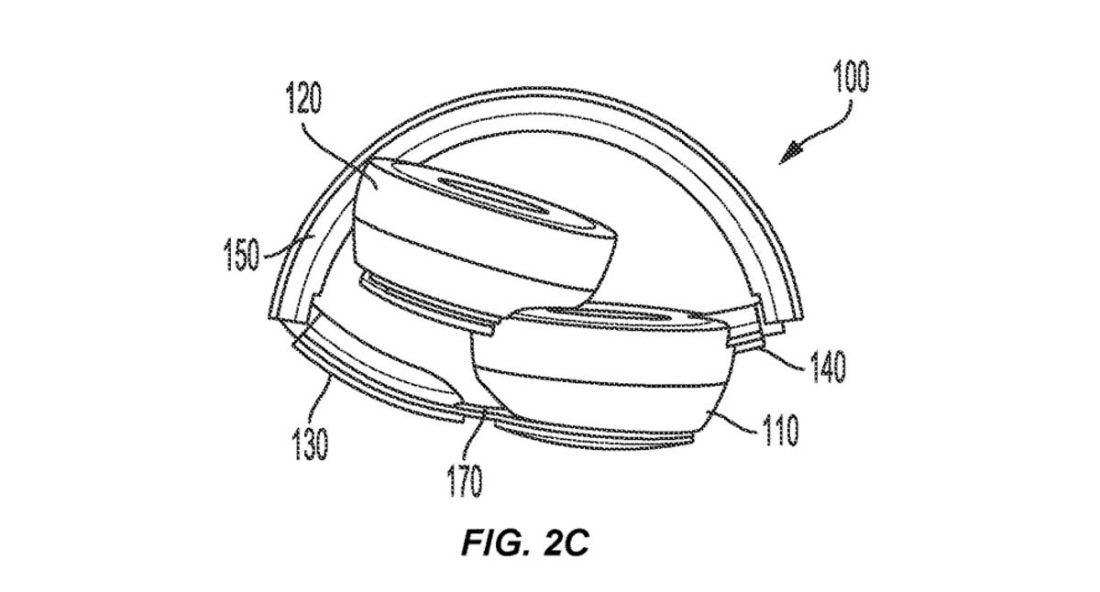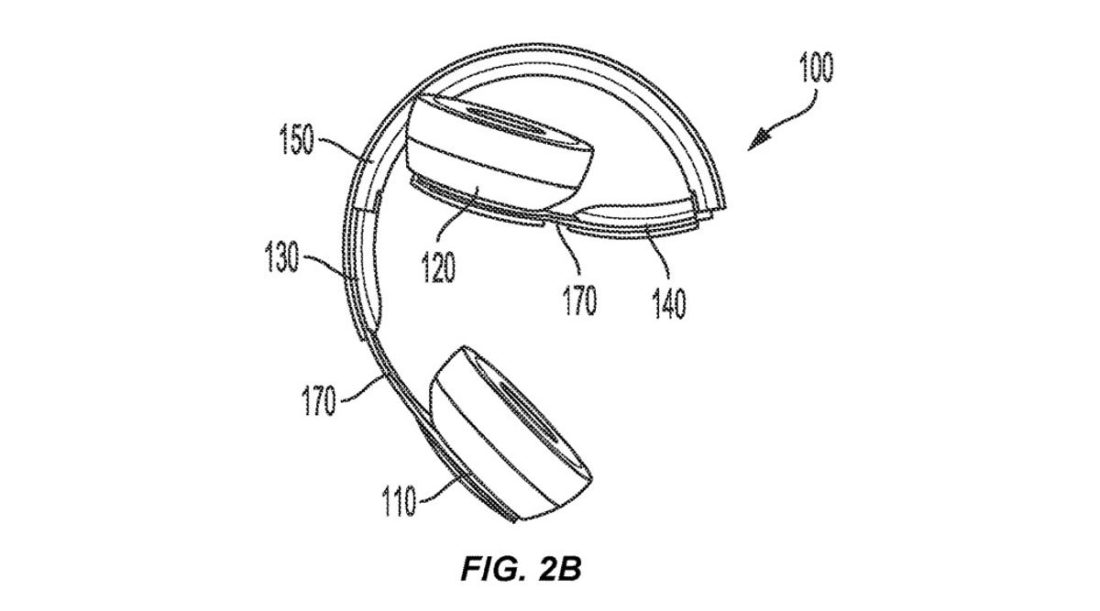A new patent released this April shows us a rare glimpse into the future of Apple’s wireless headphones. The newly invented tech will allow users to transition between the different power modes, including turning the headphones off or switching to sleep mode, by folding the headphones’ arms.
Apple’s Foldable Headphones Patent
Many of today’s headphones have headband arms that fold, as demonstrated in the patent’s figure 2C below. So far, this design has been about saving space and protecting the headphones from damage during storage or transport. The new technology would include sensors in the joints to detect if they are folded or extended. Based on the state, the headphones can predict what the user desires. For example, if both sides are folded, this signals that the listener is done, and the headphones can turn off. When one arm is folded, and the other is left extended, the headphones enter battery-saving standby mode. From here, the headphones would use less power but not shut down operations entirely, allowing a quick return to play. The standby mode, on the other hand, mimics the position many people lay their headphones in when jumping to another task, such as answering the door. According to the patent background, most wireless headphones with built-in auto on/off and sleep mode features to conserve battery fall behind on the user listening experience. This is due to a lack of these features not being implemented intuitively. In contrast, these foldable headphones activating multiple operating modes are designed to ensure better power conservation. While possibly retaining a superior listening experience.
Why Do Smart Foldable Headphones Matter?
At a glance, headphones triggering a change in the device state on being folded seems like a minor tweak, but it gives us an opportunity to really look at what Apple is doing. The philosophy of the company – which has been about simplifying things for the user – reflects heavily on this invention. Keeping to the brand’s vision, the company continues to aim for simple, value changes over extreme ones. It is a philosophy Apple holds dear to this day, evident in the words of Tim Cook, current CEO, “Some people see innovation as change, but we have never really seen it like that. It’s making things better.”
Apple’s other foldable devices technology
This isn’t the first time Apple has attempted to break ground in the realm of foldable technology. In 2016, the U.S. Patent and Trademark Office (USPTO) granted the company a series of 51 patents, which included a headset design that allowed for the ear pad to fold back when the user wanted to hear someone talking or simply when they wanted to take a break from listening to music. Moving forward to 2018, the company once again secured a patent for a foldable phone whose main highlights were a flexible hinge and the use of fabric for its housing. Soon after, in 2019, Apple secured a patent for a foldable screen that could be used for iPhones and other devices. At the time of writing this article, there are already hints about Apple releasing a patent on a new foldable camera technology allowing for better zoom capabilities and, consequently, sharper image quality. However, according to Patently Apple, an Apple-centric blog focused on the company’s intellectual property endeavors, most patents come to fruition years after their initial conception and sometimes, never at all. Given that backdrop, we might have to wait a considerable time to experience the current invention in a tangible way.

